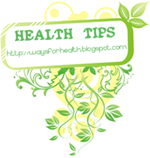Yeast Candida is usually present in humans, and their growth is usually determined by the human immune system. Specific microorganisms in the human body which occupies the same location with the candida yeast bacteria e.g. (niches) in the human body can also inhibit the growth of this candida yeast.
Yeast infections or candidacies usually grow on the skin and moist regions of the body like the genitals and mouth. Yeast infection can cause complications such as skin at least become more redness, itching and anxiety, although it may also cause severe or fatal complications if it is not treated early.
Severe Candida infections are known as candidemia and usually attack people with a very weak immune system, such as cancer, AIDS and transplant patients. Candida albicans causes 90 percent of vaginal yeast infections. Mild skin infections and mucosal membranes by Candida causing local inflammation and discomfort, is a common infection suffered by humans.
Actually the body creates bacteria to keep checking Candida. But if the fungal growth is more than the body’s capacity to keep it in check, yeast infection can occur. Usually stress, illness and general weakness can increase the intensity of the yeast infection. Though the skin can control yeast infection, any breakdown in the skin or cut in the skin can cause yeast infection to increase.
Some microorganisms can help prevent the proliferation of candida in humans. The use of cleaning chemicals (detergent) in the vagina, spraying (water), and internal disturbances (hormonal or physiological) can disrupt the balance of certain 'ecosystem'.
Pregnancy and oral contraceptive use has been reported as risk factors, while assuming the cleaning as soon as possible after unprotected vaginal sex and anal sex using lubricants containing glycerin remains controversial to this day. Diabetes mellitus and the use of antibacterial antibiotics (particularly without medical supervision) are also associated with increased incidence of yeast infections.
Avoid changing sexual partners, use condoms (even though it was only possible to protect the sexual contact), keep clean, but beware of certain chemicals that can damage the balance of microorganism in vagina and anus. Do not take antibiotics without medical supervision because it may cause immunity to antibiotics such fungi in the future, this is often recommended.
Yeast infections also can be prevented by the right kind of diet and nutrition. There is a holistic treatment which can reduce or eliminate certain foods from your diet and restore the natural Candida balance since yeast infection home treatment is concerned. One of the ways to know how to cure yeast infection is controlling the intake of sugar and yeast; these two are the factors which can increase the occurrence of Candida.
You should not have more than 10 teaspoons of sugar per day. Each teaspoon of sugar is equal to 4 grams. Check the nutrition label of a packaged food product for sugars, which are listed in grams under total carbohydrates and divide the number by 4; to convert it into teaspoons. For instance, if sugars are listed as 12 grams, you are getting 3 teaspoons of sugar per serving.
You can also make use of the glycemic index which will tell you how different types of food can increase the blood sugar levels. Did you know that food that is rich in protein do not really increase the level of sugar in the blood, but foods that are rich in carbohydrates do? On the glycemic index scale, foods with a rank of 10 or less are low, while those with 20 or more are termed to be high.
You need to make changes in your diet, like substitute oatmeal for cornflakes or tomato juice or grape fruit juice for beverages as some of the natural remedies for yeast infection.









No comments:
Post a Comment